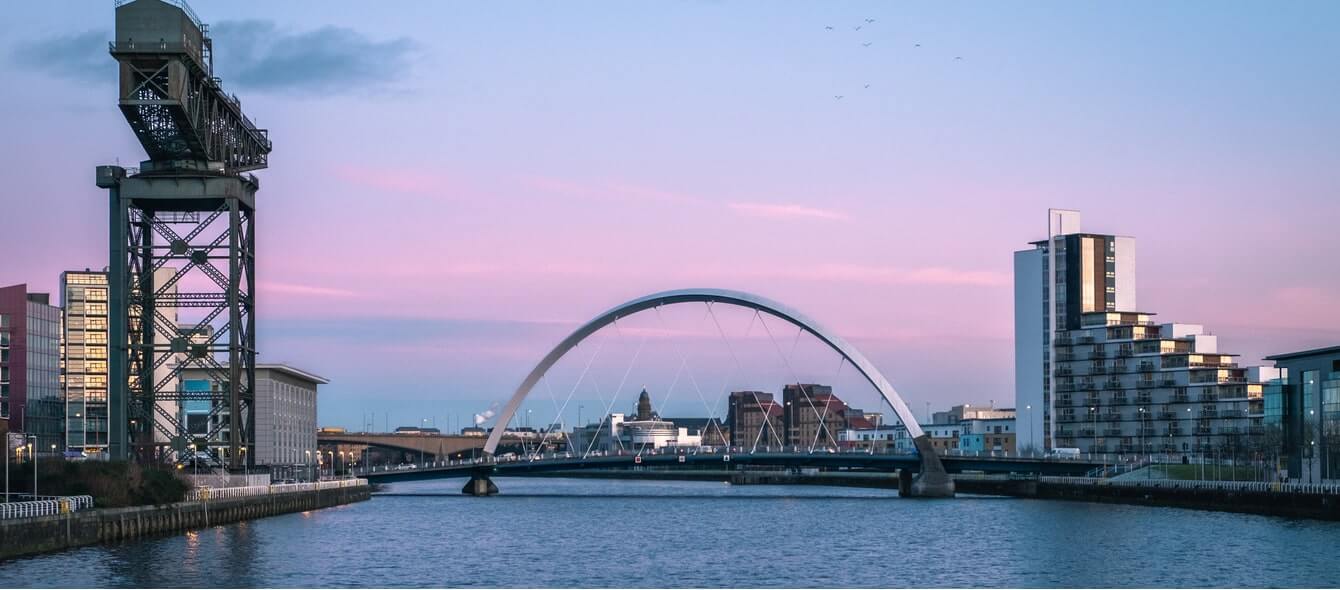Creating a net zero carbon city is hugely ambitious on any timescale, but Scottish cities Glasgow and Edinburgh both announced in May plans to achieve this goal by 2030, 15 years ahead of the national target adopted by the Scottish government.
Net zero carbon emissions does not mean zero carbon emissions, but balancing city emissions with offsets such as forestry. However, even with the potential for offsets, achieving net zero carbon status will still entail a huge reduction in city emissions. If Glasgow or Edinburgh are successful, they would become not just the UK’s first net zero carbon cities, but be among the first in the world.
Cities are undoubtably problematic when it comes to greenhouse gas emissions. They are dense concentrations of humanity and thus major centres of energy demand.
While industry has largely moved to the outskirts, cities create huge demand for building heating, cooling and lighting. Millions of people enter, leave and move around cities every day, creating demand for mass transit and millions of passenger car miles. Heavy and light trucks make continual deliveries of food and goods to keep shops stocked and businesses running day and night.
It is also a growing problem. According to UN data, the world’s urban population has expanded from 751 million people in 1950 to 4.2 billion in 2018. This number is expected to grow by another 2.5 billion by 2050, at which time 68% of humanity will live in urban areas, representing a huge proportion of world energy consumption. In Europe, 74% of people already live in urban areas.
To meet the climate change targets set out in the Paris Treaty on Climate Change, cities must, therefore, be decarbonized. But how?
Green spaces in cities are already highly valued and there is little room to expand renewable energy production. Rooftop solar is an obvious option to maximise, but the ever-taller buildings common in cities have very low roof-to-building-space ratios.
Moreover, while it is relatively easy to design new zero carbon buildings, today’s cities have grown up over centuries, representing huge amounts of embedded energy and cultural heritage. New net zero building designs represent a solution for future urbanization, but do not fully address the much tougher hurdle of retrofitting the urban buildings many of us already live in.
There are, however, already areas of common focus, primarily centred around electrification.
Glasgow city council says 70% of the city’s residents live in flats without their own parking spaces, so creating a widespread and accessible system of public charging points is an essential pre-condition of electric car adoption. Electric buses are another option to address mass transit emissions with two electric buses expected to be operating soon on Glasgow’s M3 route.
But the consequences of electrification go further; to reduce carbon emissions, the increased power consumed by a city must come from renewable energy sources, implying a huge expansion of the renewable energy capacity available across Scotland, such as on- and offshore wind, solar power, hydropower and biomass.
A second focus is energy recovery. In addition to consuming huge amounts of energy, cities produce huge amounts of waste. Treating this waste as a resource is an essential part of the ‘circular economy’ concept. Glasgow has already opened the Glasgow Recycling and Renewable Energy Centre, which is designed to divert 90% of all council waste from landfill. The centre comprises an anaerobic digestion facility and an advanced conversion facility which transforms a Refuse Derived Fuel into synthetic gas for combustion and power generation. Edinburgh council also hopes to develop a new energy recovery facility for non-recyclable waste as part of its net zero carbon ambitions.
A third area is a reorganisation of commercial transport, including Low Emissions Zones (LEZs) within both cities. Glasgow’s city centre LEZ went into operation at the start of the year and is the first in the UK outside of London. However, a more fundamental reorganisation of commercial traffic might involve freight hubs outside the city, with the link between hub and city served by a low carbon form of transport.
These are early days on the road to net carbon zero cities and a host of new technologies may well be necessary to accomplish the task, for example replacing natural gas with biogas or hydrogen for heating. Neither Glasgow nor Edinburgh pretend to have all the answers right now; what they do have is the ambition to find them, a mission critical to addressing climate change.
Finding the right answers will require policy flexibility, industry partners, public support and perhaps the occasional misstep as solutions are tried and tested, but the rewards should be large not just in terms of the cities’ own environmental performance, but in developing a blueprint for successful urban decarbonisation elsewhere. It is a challenge of global significance.
